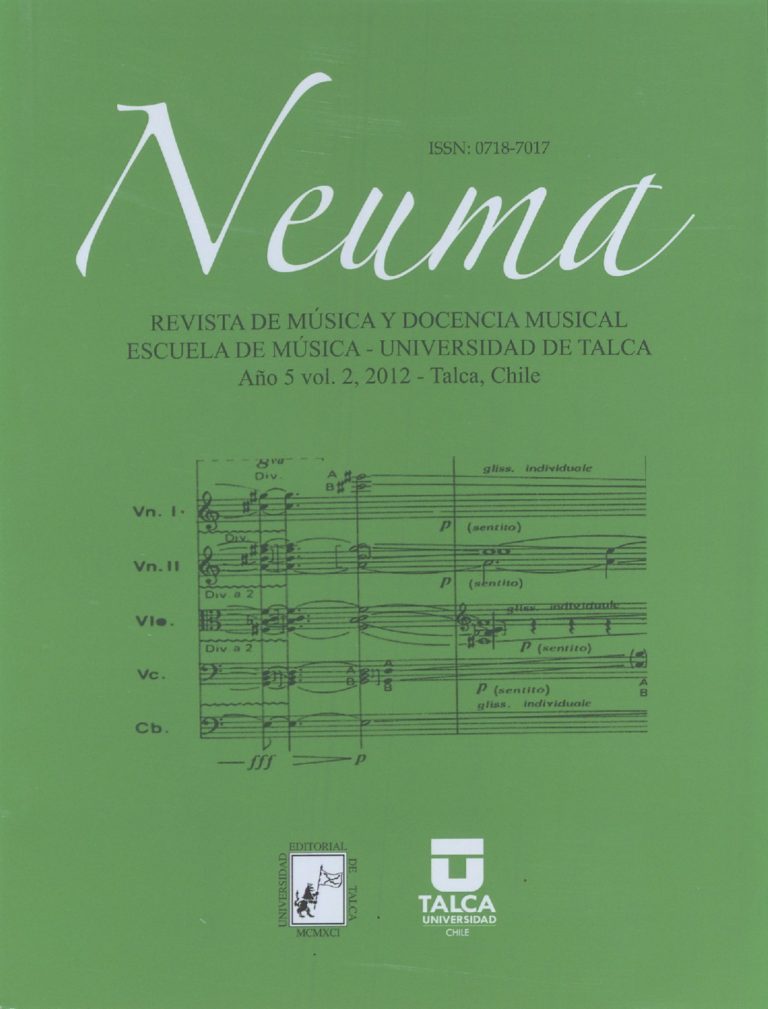Abstract
This research paper is the fruit of years of research dealing with Bach’s symbolism in his work, anticipated by the wise Albert Schweitzer in his book “Bach, le musicienpoéte” (1904). What some people consider to be but coincidences has become a truth beyond any doubts. However, some people affirm that Bach’s modesty would not allow him the use of numbers associated with his own person. The contents of this article pretend to demonstrate Bach’s intentionality beyond humble attitudes. The use of numbers associated to his person is considered in the present research as a teaching of preterits and forgotten compositional techniques of the great pedagogue Bach, codified for generations to come.
References
Alain, Olivier (1970). Bach, Classiques Hachette de la Musique.
Basso, Alberto (1985). Jean-Sebastien Bach (traducción al francés de Frau Musica, la Vita e le Opere di J.S.Bach, Edizioni di Torino, 1983). Librairie Artheme Fayard.
Berman, Edgar (1986). Africa with Schweitzer. New York: Macmillan Publishing Co.
Clark, Robert y John David Peterson (1984). Johann Sebastian Bach Orgelbüchlein St. Louis: Concordia Publishing House.
David, Hans T. y Arthur Mendel (1998). The New Bach Reader, A life of Johann Sebastian Bach in letters and documents, revised and enlarged by Wolff, Christoph Wolff. New York and London.
Eidam, Klaus (1999). Das wahre Leben des Johann Sebastian Bach. Munich: Piper Verlag GmbH.
Guillard, Georges (1987). J.-S. Bach et l’Orgue, Collection Que sais-je. Presses Universitaires de France.
Keller, Hermann (1967). The Organ Works of Bach, A Contribution to their History, Form, Interpretation and Performance. Leipzig: C.F. Peters Corporation.
Leonhardt Gustav M. (1952).The Art of Fugue: Bach’s last Harpsichord work, The Hague, Martinus Nijhoff. Reprint: Editions Van de Velde.
Marcel, Luc-André (1974). BACH, Solfeges. Editions du Seuil.
Mendel, Arthur y Hans David (1945). The Bach Reader, a Life of Johann Sebastian Bach in Letters and Documents.
Moroney, Davitt (2000). Bach Une Vie. Actes Sud.
Scholem, Gershom Gerhard (1971). Encyclopedia Judaica. Jerusalem.
Tatlow Ruth (1991). Bach and the Number Alphabet. Cambridge University Press.
Vidal, Pierre (1984). L’Origine Thematique de l’Art de la Fugue et ses incidences. Paris.
William, Peters (2003). The Organ Music of J. S. Bach (Second Edition). Cambridge University Press.
Wolff, Christoph (2000). Johann Sebastian Bach, the Learned Musician. W.W.W. Norton.
ARTÍCULOS
Alain, Olivier (1975). “Un supplement inédit aux “Variations Goldberg””, Revue de Musicologie, Vol. LXI.
Cantagrel, Gilles (1991). Guide de la Musique d’Orgue, Johann Sebastian Bach. Fayard.
Currie Randolph (1973).“Cyclic Unity in Bach’s Sechs Choraele: A new Look at the Schueblers”, BACH, Quarterly Journal of th Riemenschneider-Bach Institute, Vol. IV y II.
Currie, Randolph (1974). “A Neglected Guide to Bach’s use of Number Symbolism”, BACH, Quarterly Journal of the Riemenschneider-Bach Institute, Part I, Vol. V, Issue 1, Part II, Vol. 2, Issue 2 ,y parte Part III, Vol. V, Issue 3.
Currie, Randolph (1977). “Bach’s Newly Discovered Canons in a First Edition: Some Observations”, BACH, Quarterly Journal of th Riemenschneider-Bach Institute, V. VIII Parte II y Part III.
Jansen, Martin (1937). “Bach’s Zaklensymbolik. An seinem Passionem untersucht“, Bach-Jahrbuch.
Kee, Piet (1984). “Astronomy in Buxtehude’s Passacaglia”, The Diapason.
Klingfords, Gunno (1977). Number Symbolism, Bach’s Cantatas recording from Das Alte Werk, Telefunken (6.35335 EX)
Shay, Edmund (1985). “New Insigths into Bach’s Orgelbuechlein”, The Diapason, Part I.
Wolff, Christoph (1975). “Preface to Bach Vierzehn Canons Erstausgabe, Barenreiter BA 5153.
PARTITURAS.
Callwey, Georg D.W. (1906). Notencbüchlein für Anna Magdalena Bach (1725). München Steglich
Moroney, Davitt (1989). Joh. Seb Bach Die Kunst der Fuge für Cembalo BWV 1080 nach den Quellen. München: G. Henle Verlag .
Steglich, Rudolf (1958). Johann Sebastian Bach: Klavieruebung 1. Teil, Sechs Partiten. G. Henle Verlag.
Wolff, Christoph BACH: Vierzehn Kanons ueber die ersten acht Fudamentalnoten der Aria aus den Goldberg Variationen BWV 1087. Erstausgabe Bärenreiter 5153
DISCOGRAFÍA
Obras completas para órgano de Bach por los siguientes intérpretes: MarieClaire Alain (dos integrales), Michel Chapuis, Peter Hurford, André Isoir, George Richtie, Wolfgang Stockmeier, Helmuth Walcha. La obra completa de Clavecín de Bach por Bob van Asperen, Pieter-Jan Belder, Menno van Delft, Pieter Dirksen, Joseph Payne, Christiane Wuyts.
El Arte de la Fuga en las dos versiones de Gustav Leonhardt en clavecín. La misma obra en órgano tocada por Marie-Claire Alain, Davitt Moroney, Wolfgang Rübsam, Helmuth Walcha. Algunas versiones “orquestales” entre las que sobresale la del conjunto HESPÉRION XX dirigida por Jordi Savall.

This work is licensed under a Creative Commons Attribution-NonCommercial 4.0 International License.
Copyright (c) 2012 Neuma (Talca)

